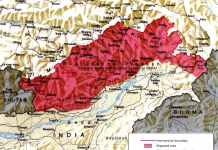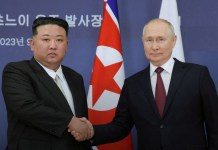In March this year, in testimony on Capitol Hill, the head of U.S. Indo-Pacific Command (USINDOPACOM), Navy Adm. John C. Aquilino, said that China would “soon have the world’s largest air force.”
For some years now, the People’s Liberation Army Navy (PLAN) has had more warships than the US, although only in numbers and not tonnage, where they have a long way to go. He further added, “The magnitude, scope, and scale of this security challenge cannot be understated.”
In its 2023 report on Chinese military power, the Pentagon noted that the PLA Air Force (PLAAF) and PLA Navy (PLAN) combined have over 3,150 operational aircraft other than trainers and uncrewed aircraft systems (UAS).
Interestingly, the U.S. Air Force (USAF) has around 4,000, and the US Navy, Marine Corps, and Army also have several thousand.
China is producing combat platforms at an amazing rate. Currently, it makes around 60 J-20 5th Generation fighters a year, and the figure will soon go up to 100. All these are domestic requirements. Comparatively, the US makes around 135 F-35 a year, of which nearly half are foreign partners.
Many American and Indian analysts feel that the J-20 is roughly a 4.5-generation aircraft because the parameters to consider for the 5th generation are not common between the West and China. Notwithstanding, at the current rate of growth, Chinese air power could overtake the USA in the near future, the Admiral has said.
It is thus time to look at China’s rising air power.
PLAAF Initial Transformation
The PLAAF currently has 400,000 active personnel and nearly 2,700 aircraft. It has come a long way since using the MiG-15s in the Korean War. In the initial decades, it imported or domestically produced Soviet aircraft under license.
Later, when there was a rift between the communist parties of the two giants, China began reverse-engineering the Soviet/Russian aircraft designs. In the 1970s-80s, as part of the USA’s Ping-Pong diplomacy, China did manage access to some American military technologies. But things changed after the 1989 Tiananmen Square protests and massacre.
The US withdrew. Also, with the end of the Cold War in 1991, the USA had little use of China to combat Russia.
In the late 1990s, the PLAAF began making substantial progress in transitioning to more modern airpower with the acquisition and development of advanced aircraft like the Sukhoi Su-27, Su-30 MKK, Su-35, and their reverse-engineered variants, Shenyang J-11, J-15, and J-16.
In 2004, the PLAAF released the force reform concept “Strategic Air Force,” which aimed to reconstruct the PLAAF into an integrated fighting force capable of both offensive and defensive operations in air and space.
‘Raptor Salad’ For Lunch! US F-22 Raptor Outgunned, Outmaneuvered By German Eurofighter Typhoon?
The 2004 reform included changes in doctrine, equipment, training, education, organizational structure, and strategic thinking. Their own designs included the Chengdu J-10 (albeit with initial inputs from the Israel-supported Lavi program) and the Chengdu J-20 and Shenyang J-31 5th Generation fighters. They also locally designed the JF-17 for export.
More Recent Approach & Strategy
By the mid-2000s, PLAAF had grown familiar with precision-guided munitions, aerial refueling, AEW&C aircraft, and networked command & control systems.
Some uncertainties remained, including the inability to develop modern aero engines. However, the PLAAF’s strategic orientation continued to evolve, with a focus on expanding its operational capabilities, including the development of new advanced fighters, long-range bombers, large transports, AEW&C, FRA, a variety of helicopters, and UAS.
Today, the PLAAF is recognized as one of the world’s most capable air forces, reflecting modern training programs and a strategic shift towards developing a formidable aerospace force capable of projecting power regionally and even globally.
Most importantly, the country has gained the capability to counter US intervention in the Taiwan Strait by positioning quality and quantity fighter assets in Eastern and Southern Theatre Commands.
PLAAF intensified its joint operation effort with the PLAN, building up power projection and expeditionary strike capabilities and carrying out joint patrol missions in the East and South China Seas. PLAAF has developed sophisticated integrated air defense systems capable of providing coverage beyond the coastline and borders.
China is the second country in the world and the first in Asia to field an operational stealth aircraft, while the second stealth jet is under advanced development.
Around the same time, the PLAAF introduced PL-10 and PL-15 missiles to improve its air combat capability. Due to improved domestic production, the PLAAF has successfully closed the gap with the West, introducing indigenously developed airframes, composite materials, turbofan engines, advanced avionics, and weapon systems. PLAAF combat pilots fly an average of 100-150 flying hours annually.
Current Holdings Of PLAAF
The PLAAF operates a fleet of nearly 2,700 aircraft, of which around 1,800 are combat aircraft (fighters, attack aircraft, and bombers).
China has the second-largest active combat aircraft fleet and the third-largest total aircraft fleet in the world. PLAAF has nearly 1,200 4th and 5th-gen aircraft in more than 25 frontline combat brigades.
The J-10C, J-16, and J-20 are all equipped with AESA radar systems, domestic WS-10 engines, standoff weapons, and long-range air-to-air missiles. PLAAF also made substantial progress with large aircraft design and production, including Xian Y-20 and WS-20 engines. All the old Chengdu J-7 and Shenyang J-8 platforms have been retired.
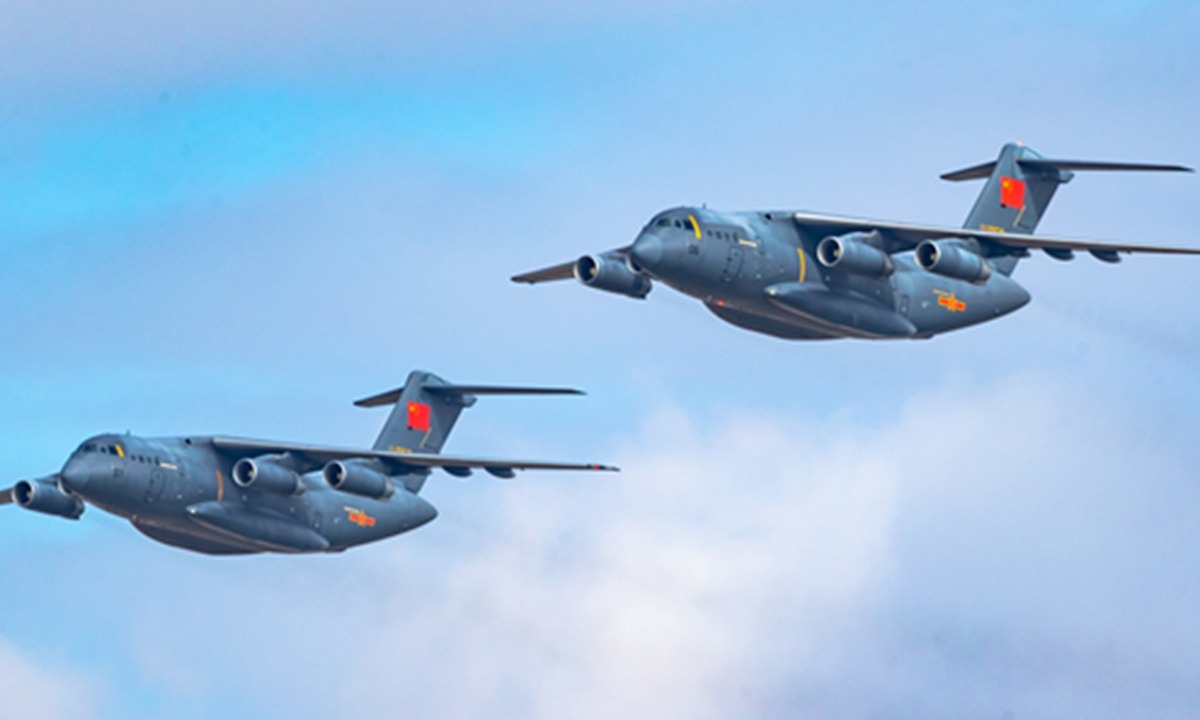
The main active combat aircraft currently include 580 J-10 (multirole) variants, 245 J-11 (air superiority), 280 J-16 (multirole strike), 300 J-20 (5th generation air superiority), 32 Su-27 (air superiority), 97 Su-30 MKK (multirole), and 24 Su-35. China is accelerating its production of the J-16, J-10, and its sea variants as well.
They have nearly 180 H-6 aircraft (Soviet Tupolev Tu-16), of which around 60 are the H-6K cruise missile-carrying bombers. The H-6K is known in Mainland China as the “God of War.”
They have around 320 transport aircraft, including 50 Y-20 (66-ton), 28 AEW&C, and 21 FRA. There are nearly 25 EW aircraft, and the PLA Ground Forces have nearly 300 attack helicopters.
China’s SAM inventory includes nearly 500 S-300 and its Chinese variant, HQ-9. 130 HQ-22 medium-to-long-range semi-active radar homing/radio-command guidance air defense systems were developed and manufactured in China. They have six S-400 complexes.
The J-16 evolved from the Su-27 and is not in the class of India’s Su-30 MKI or the USAF’s F-15EX. But its numbers have been going up. Once the J-10C and J-20 get the new Chinese WS-10 and WS-15 series engines, supply chain issues will be sorted out, and dependence on Russia will be reduced.
PLAAF does not have urgency for large tankers until they start going beyond the 1st Island chain. The new Y-20s have allowed for the repurposing of aging Y-7 and Y-8 light and medium transport aircraft to training or other secondary roles. The YY-20A tanker variant will soon be inducted in large numbers. Y-20 AEW, the airborne early warning and control variant, is based on Y-20B and is designated as KJ-3000.
There are nearly 180 Wing Loong class MALE/HALE UAVs and a huge inventory of smaller drones, including drone swarm operational capability. China’s recently introduced Xianglong jet-powered UAS, the supersonic WZ-8, and the redesigned GJ-11 stealth Unmanned Combat Air Vehicle (UCAV) will make a huge difference.
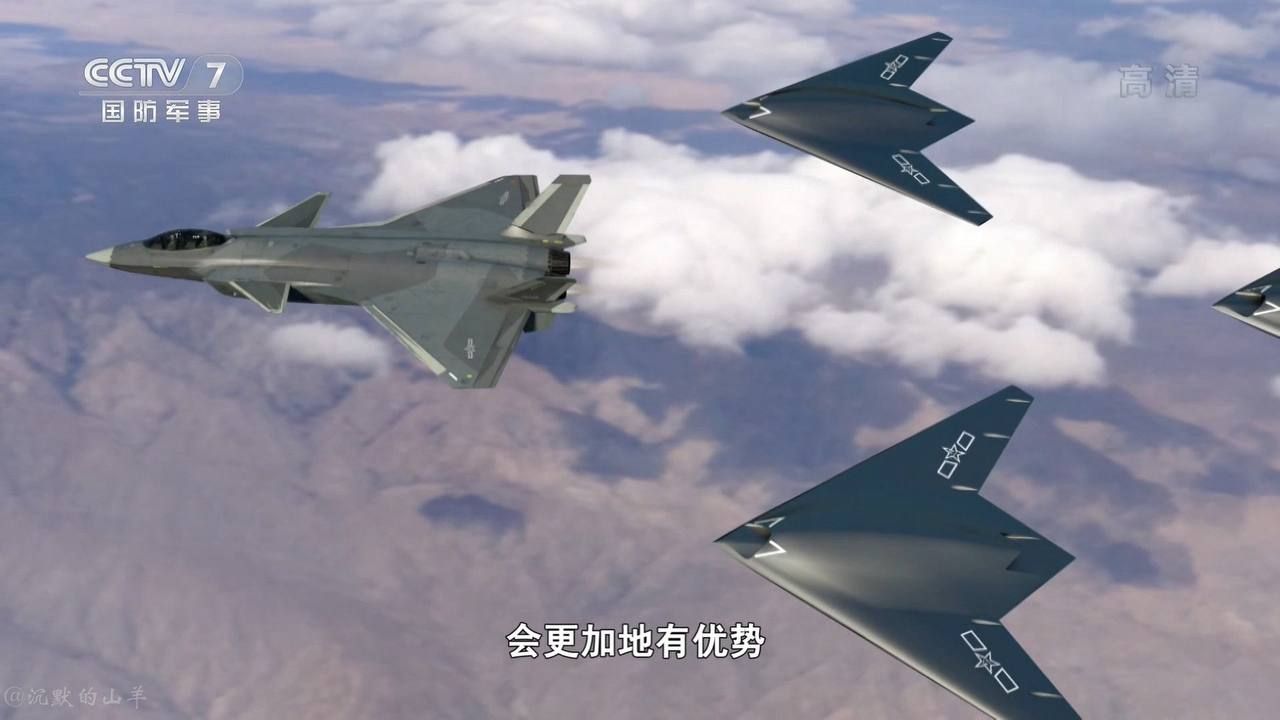
Chinese Aerial Missiles
The AAMs (Air-To-Air Missiles) are pushing the performance and payload envelope. China is developing very long-range air-to-air missiles (VLRAAM) that can strike targets from far distances. The latest 5th-generation AAMs would have a greater range and be able to identify smaller, low-flying targets such as UAVs. They will also keep the adversary’s large platforms at farther distances.
The PL-10 is an advanced short-range, infrared-homing AAM with a thrust-vectoring solid-propellant rocket with an operational range of 20 km. China claims that the PL-10 provides comparable performance to European ASRAAM and IRIS-T missiles while offering superior kinematic performances than AIM-9X.
The PL-12 (60-100 km range) is an active radar-guided beyond-visual-range (BVR) AAM claimed to be comparable to the US AIM-120 AMRAAM and the Russian R-77.
The PL-15 missile with AESA radar and claimed operational range of 200–300 km is considered better than the American AIM-120 AMRAAM. China already has the PL-17 VLRAAM (400 km) appears comparable to Russia’s R-37M.
China is developing a more advanced long-range missile, PL-XX or PL-21. It has been exploring dual-mode guidance capabilities, which use both active radar and infrared homing seekers. These capabilities improve target selection and make the missiles more resistant to countermeasures.
The PL-21 uses an active AESA radar and is considered comparable to the American AIM-260 JATM and the Russian R-37M. It seems to be an advanced but smaller variant of PL-17.
PLAAF & The Theatre Commands
PLAAF HQ controls and supports the five Theater Command Air Forces (TCAF). Each TCAF has seven to ten brigades. Each brigade has three to six fighter groups totaling 30-50 aircraft. There are Bases that exercised command and control over units (brigades) in their AOR and conducted joint exercises. Brigades could contain several subordinate flight groups; a flight group has one type of aircraft.
The bomber, transport, and specialized divisions are still to be reorganized into brigades and remain under the control of PLAAF HQ and TCAF headquarters. The PLAAF has over 150 military airfields (air bases) distributed across the theater commands.
China’s Aviation Industrial Base
China continues to expand its formidable military-industrial base. China’s Aviation Industry Corporation of China (AVIC) has nearly 420,000 employees, compared to India’s Hindustan Aeronautics Ltd. (HAL), which has 28,000.
AVIC has 100 subsidiaries and 27 listed companies. Two Chinese defense Companies are in the global top 10, and four are in the top 25. China’s centralized control allows for leveraging resources across industry, academia, finance, and research organizations with the end goal of strengthening the PLA and increasing China’s “comprehensive national power.”
China also uses diaspora and cyber means to acquire technologies. It often buys critical technology industries abroad or enrolls its own scholars there.
Global Implications
China has a well-laid-out and openly articulated game plan. By 2025, China wants to master most leading-edge defense technologies.
By 2027, if they decide to take that geopolitical risk, they want the capability to invade Taiwan. By 2035, they want to have a world-class PLA competing with the US Armed Forces as a peer. By 2049, they want to surpass the USA as the No.1 global power.
PLAAF, PLAN, and Space capability are central to this ambition. Key technologies include stealth, counter-stealth, counter-space, hypersonic, autonomous systems, anti-drone, and directed energy. The CCP will leverage its Military-Civil Fusion.
The PLA still enjoys good year-on-year budget growth, with a 7.2% increase in 2024 alone. The rising Chinese air power has already shifted the balance. Unlike Russia in the past, China is in direct competition with the US and desires to surpass it one day.
The combined USAF inventory of F-22 and F-35 low-observable aircraft will remain substantially larger for now, but Beijing plans to have 1,000 J-20s by 2035. China is likely to unveil the new, low-observable bomber, the H-20, in 2025, with a “flying wing” design like the B-2.
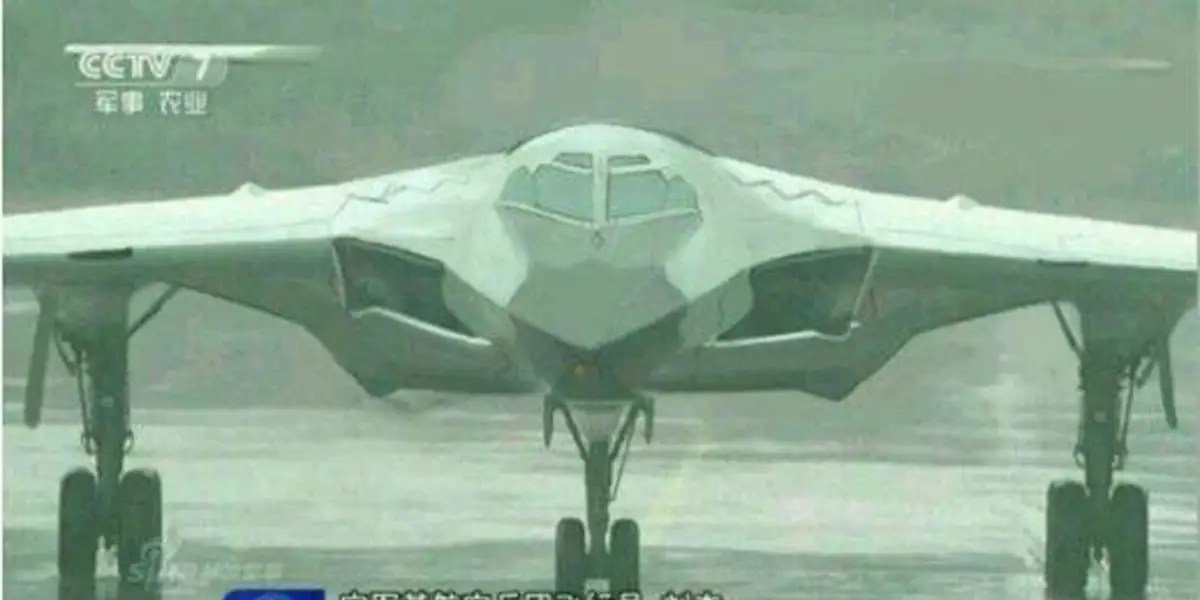
PLAAF already has 50 Y-20s and 20 Il-76s in service, with more of the former in construction. They have six Airborne Brigades capable of launching aerial assaults with nearly 11,000 troops. The significant additional number of YY-20s would improve existing air-to-air refueling assets and global reach.
Greater investment and better WS series high-performance jet engines will actually free them from Russian dependence. The next logical step would be to make large transport and airliner engines.
The PL-17 armed fighters can force US FRA to operate at least 1,200 kilometers away from China’s coast, which could result in its fighter escorts not having enough fuel to stay on station.
The Chinese plan to use the KJ-2000 AEW&C and ground-based, over-the-horizon radar data to detect and later target adversary platforms using VLRAAM missiles. It is much more important for China to have long-range missiles to thwart the US from coming closer to its mainland from the Pacific bases.
Chinese AAMs are meant to be “AWACS killers.” Loss of an FRA or AEW&C could have serious implications for all other aircraft in the mission.
Air power remains the most potent means of prosecuting war. It provides long-range precision and flexibility. Modern fighters are omni-role and can thus perform multiple missions in a single sortie.
Aerial refueling has extended the ranges. The AEW&C provides cover deep in enemy territory. For a long time, it has been clear that dominance in the air is necessary for winning ground or sea wars.
Fighter aircraft remain the most potent platform for both offensive and defensive operations. While many are predicting the future to be unmanned, practically all the fifth—and sixth-generation fighters that will see the world through this century are evolving as manned fighters.
The recently released National Defence Strategy suggests that abundant with cash, China’s conventional power is growing more rapidly than that of Russia. Weakened Russia means greater access to its military technology for China.
US Secretary of the Air Force Frank Kendall said aptly, “We are in a race for military technological superiority with a capable pacing challenge (from China). Our cushion is gone. We are out of time.” But it must be remembered that China’s combat exposure and that of international exercises is very low.
India is one of the most threatened nations in the world. It has two nuclear weapon-possessing neighbors.
For India, both the numbers and capability gap with China are continuing to build. IAF continues to be at a near-all-time low in the number of fighter squadrons. Considering its continental size and threat in IOR, India needs many for AEW&C and FRA.
The militaries are facing eyeball to eyeball. The J-20s are now sitting across the Himalayas at Hotan and Shigatse. India must accelerate the LCA Mk2 and AMCA programs, even if it means pumping more money.
If necessary, buy some interim fighters, including a 5th-generation one. India’s weapon inventories have to go up. Supply chains have to be secured through indigenous production. The two-front threat is real. India must act immediately, lest it become too late, even if it means substantially increasing the defense budget.
- Air Marshal Anil Chopra (Retired) is an Indian Air Force veteran fighter test pilot and former Director-General of the Center for Air Power Studies in New Delhi. He has been decorated with gallantry and distinguished service medals while serving in the IAF for 40 years.
- He tweets @Chopsyturvey
- Follow EurAsian Times on Google News

